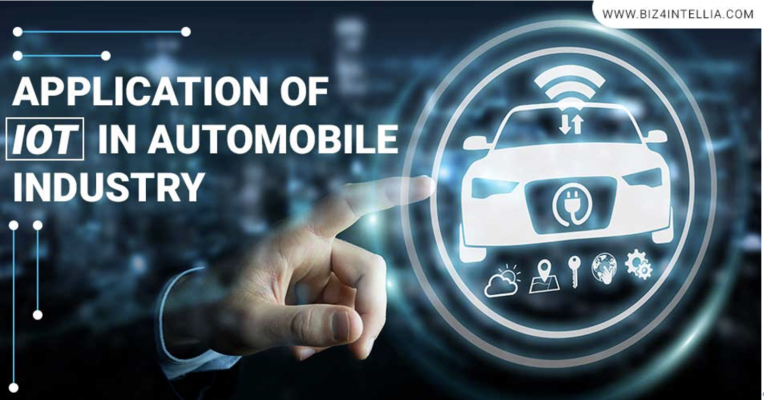
(Source: https://www.biz4intellia.com/blog/iot-applications-in-automotive-industry/)
1. Overview
Automotive production is one of the biggest manufacturing industries in the world with more than 70 million vehicles produced every year. Meanwhile, IoT is one the fastest growing technology in terms of quantity of applications and commercial value. The combination of these two has opened new avenues for both manufacturers and buyers. Thanks to its diverse functionalities at both industrial and commercial levels, the integration of IoT and automobile has become a prominent target for carmakers in the global automotive market.
2 . IoT in Automotive Industry
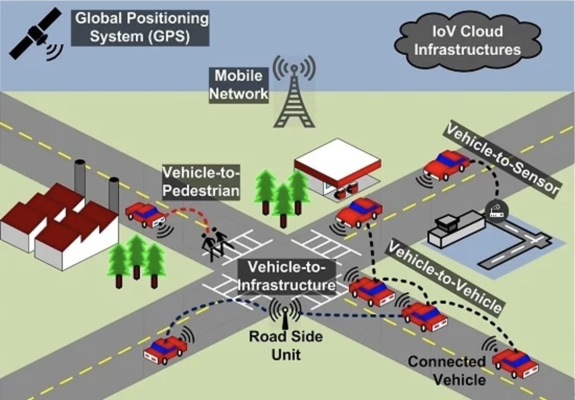
(Source: https://www.mdpi.com/1424-8220/16/6/879)
Connecting cars is not a novel idea as General Motors’ OnStar project which provides connected communication subscription services for vehicles has been released back in 1996. However, the development of IoT has enabled more than just GPS tracking and in-vehicle communication. An IoT network called CV2X now connects vehicles and smartphones with four types of connection:
- Vehicle to vehicle (V2V): V2V connection allows vehicles at close range to exchange data including location, speed and dynamics. This technology may help prevent accidents, avoid the collision, and alert in an emergency.
- Vehicle to infrastructure (V2I): The infrastructure in V2I constitutes traffic lights, lane markings, toll booths, parking lot, and gas station. V2I can help in controlling traffic flow and avoid long queues at bus stops.
- Vehicle to pedestrians (V2P): Pedestrians can also connect with the CV2X network to find nearby taxis or ask for carpooling.
- Vehicle to the network (V2N): This allows real-time traffic responding and routing as drivers can be warned of incoming hazardous weather conditions, accidents, or traffic jams on their routes.
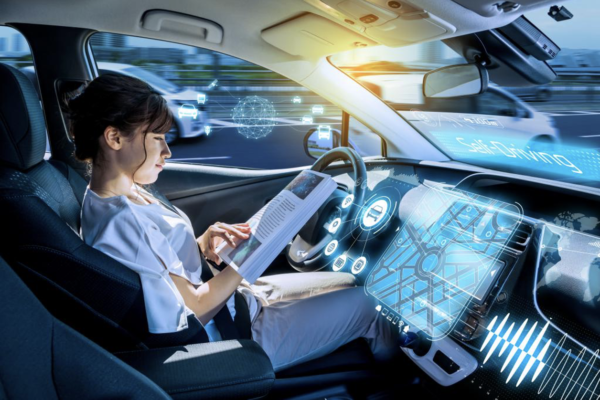
(Source: https://ec.europa.eu/jrc/en/news/cybersecurity-challenges-uptake-artificial-intelligence-autonomous-driving)
Besides connecting devices, IoT also provides an automotive maintenance system where drivers can have an overview of their cars, indicators about which parts need replacement or repairment and prevent possible malfunction.
An autonomous vehicle is a special sector that is not yet fully discovered and somewhat futuristic to many people. However, semi-autonomous vehicles that assist drivers with driving, parking, and partly control the vehicle’s operation have been manufactured. Thanks to the help of numerous sensors and cameras, driving is now safer and more comfortable.
3. Intelligent Transport
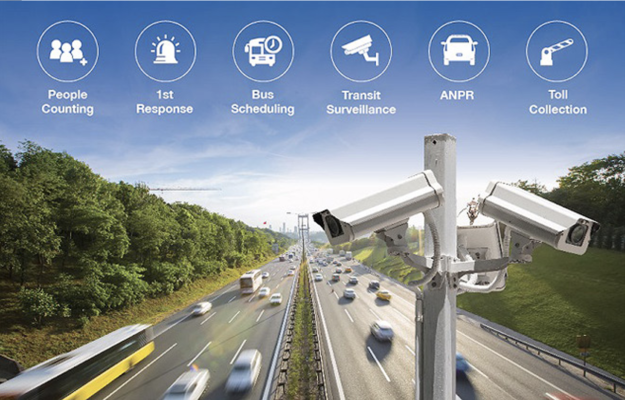
(Source: https://www.nexcomusa.com/news/detail/intelligent-transportation-systems-world)
Intelligent Transport System (ITS) is an advanced application that utilizes the power of IoT and wireless communication to monitor, evaluate and manage transportation systems to improve efficiency and safety. The development of ITS is challenging as it requires strong expertise in advanced technologies such as IoT, Computer Vision, Big Data, Machine Learning, and Artificial Intelligence. The system’s operation also needs to be flawless with the ability to quickly respond to real-time events. There are multiple tasks that can be resolved with Intelligent Transport System.
Traffic Management Center (TMC) is the headquarters where all gathered data from operating vehicles on the roads is processed and analyzed to generate accurate information about the instant situation of traffic. Then, precise information about congestion, accidents, light, road, and weather conditions, parking guidance or schedule, and delay of public transports could be transmitted back to not only drivers on the roads but also pedestrians, commuters, travelers, and even companies for commercial data analysis.
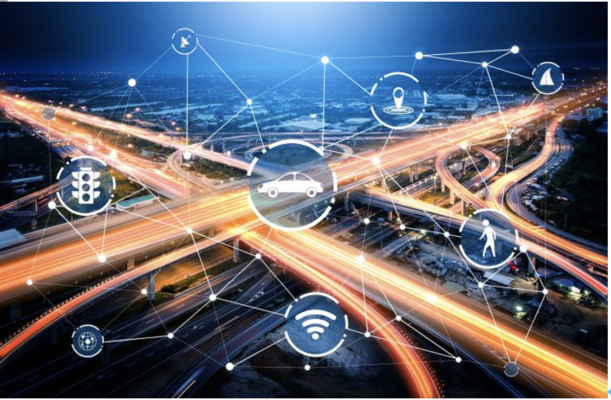
(Source: https://www.openaccessgovernment.org/smart-cities-new-power-dynamics-intelligent-transport-systems/112128/)
Traffic Management Center can take a step further by adjusting traffic signals, dispatching emergency services, or dynamically managing transit operations for a smooth traffic flow. The government can also take advantage of ITS by using collected data for urban planning, lawmaking, law enforcement, and public transport management.
ITS usage is a win-win situation for both citizens and administrators where it provides comfort and safety to citizens and easy, cost-effective maintenance and surveillance to city administrators.
4. Conclusion
Internet of Things is revolutionizing the automotive industry and will completely transform the way we interact with our vehicles. There are many ways to implement IoT in the automotive industry and with the explosion of IoT services, fully autonomous vehicles could become a reality in the very near future.
5. References
https://www.biz4intellia.com/blog/iot-applications-in-automotive-industry/
https://www.fpt-software.com/applications-of-iot-in-the-automotive-industry/
https://ardas-it.com/10-ways-the-automotive-industry-an-make-use-of-iot-technology
https://www.n-ix.com/intelligent-transport-system/
